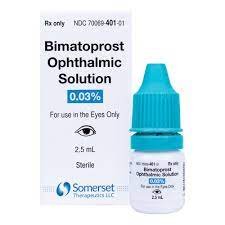Muscle relaxants are medications used to relieve muscle spasms, tension, and pain. They can be essential for individuals dealing with various conditions, from acute injuries to chronic pain syndromes. However, selecting the most suitable muscle relaxant can be challenging due to the variety of options available and the potential side effects. This article provides a comprehensive guide to help you choose the best muscle relaxant for your needs.
1. Understand the Types of Muscle Relaxants
Muscle relaxants can be broadly categorized into two types:
- Antispasmodics: These medications are primarily used for acute muscle spasms caused by injury or overuse. Common examples include cyclobenzaprine, carisoprodol, and methocarbamol. Antispasmodics work by depressing the central nervous system, which helps reduce muscle tension.
- Antispastics: These are typically prescribed for chronic conditions that involve muscle stiffness and spasticity, such as multiple sclerosis or cerebral palsy. Baclofen and tizanidine are well-known antispastics. They target specific receptors in the brain and spinal cord to help relax muscles.
Understanding the difference between these categories is crucial in selecting the right medication for your condition.
2. Identify Your Condition
Before choosing a muscle relaxant, it’s essential to consult a healthcare professional to diagnose your condition accurately. Different conditions may require different treatments. For example:
- Acute Injuries: If you are recovering from a sprain, strain, or surgery, antispasmodics may be more effective in providing quick relief.
- Chronic Pain: Conditions like fibromyalgia or chronic back pain may benefit from antispastics that help manage long-term muscle tension.
Understanding the root cause of your muscle issues can guide you and your healthcare provider in making the right choice.
3. Evaluate Effectiveness and Duration of Use
Some muscle relaxants are designed for short-term relief, while others may be used for longer durations. Discuss with your healthcare provider how long you may need to use the medication. Here are some factors to consider:
- Short-Term Use: If you are dealing with a temporary issue, such as an injury, a short course of antispasmodics may be suitable. These medications can provide immediate relief without the risk of dependency.
- Long-Term Use: For chronic conditions, antispastics might be more appropriate. However, long-term use of any muscle relaxant requires careful monitoring due to potential side effects.
4. Assess Potential Side Effects
Every medication comes with a risk of side effects. It’s important to discuss these potential side effects with your healthcare provider. Common side effects of muscle relaxants include:
- Drowsiness: Many muscle relaxants can cause sedation, which may affect your ability to perform daily activities.
- Dizziness and Confusion: Some individuals may experience dizziness or confusion, particularly in older adults.
- Gastrointestinal Issues: Nausea and constipation can occur with certain muscle relaxants.
It’s essential to weigh the benefits against the risks when choosing a muscle relaxant.
5. Consider Drug Interactions
If you are taking other medications, it’s crucial to discuss potential drug interactions with your healthcare provider or pharmacist. Muscle relaxants can interact with various medications, including:
- CNS Depressants: Combining muscle relaxants with alcohol, benzodiazepines, or opioids can lead to increased sedation and respiratory depression.
- Other Prescription Drugs: Certain medications may amplify the effects of muscle relaxants, increasing the risk of side effects.
Your healthcare provider can help you navigate these interactions to ensure a safe treatment plan.
6. Explore Non-Pharmacological Options
While muscle relaxants can be effective, they are not the only solution. Consider non-pharmacological options that can complement or even replace medication in some cases. These may include:
- Physical Therapy: A trained physical therapist can provide tailored exercises and stretches to improve muscle function and alleviate tension.
- Heat/Cold Therapy: Applying heat or cold packs can help reduce inflammation and promote relaxation in sore muscles.
- Massage Therapy: Therapeutic massage can relieve muscle tension and promote relaxation.
- Mind-Body Techniques: Practices such as yoga, meditation, and deep breathing can also help reduce stress and muscle tension.
7. Trial and Monitoring
Finding the right muscle relaxant may require some trial and error. Work closely with your healthcare provider to monitor your symptoms and side effects. Keep a journal of your experiences, noting how the medication affects your pain levels, energy, and daily activities.
- Regular Follow-ups: Schedule follow-up appointments with your healthcare provider to discuss your progress. This will help in adjusting dosages or trying different medications if needed.
- Communication is Key: Be open about any side effects you experience, as this feedback is crucial for finding the most suitable treatment.
8. Conclusion
Choosing the best muscle relaxant for your needs is a multifaceted process that requires careful consideration of your condition, treatment goals, potential side effects, and available options. By understanding the types of muscle relaxants, consulting with your healthcare provider, and exploring non-pharmacological approaches, you can make an informed decision that best suits your health needs.

 Cart is empty
Cart is empty 





Leave A Comment